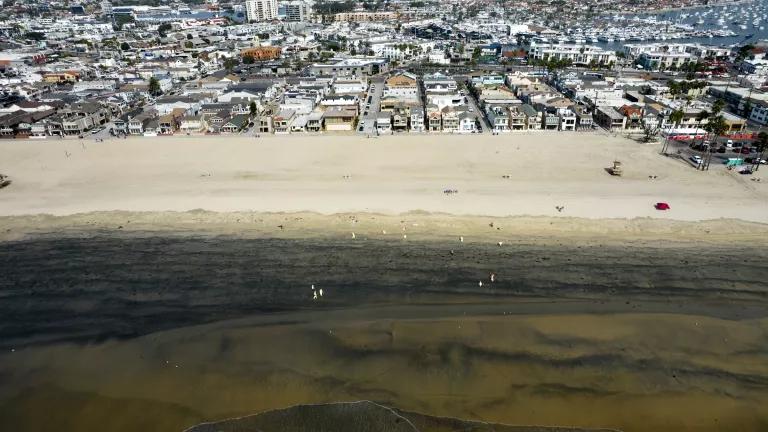Southern CA Coastline Devastated by Orange County Oil Spill
When I heard that more than 126,000 gallons of crude oil had been dumped into the ocean off Huntington Beach, I had to check it out for myself.

When I heard about the disastrous oil spill that dumped more than 126,000 gallons of crude oil into the ocean off Huntington Beach over the weekend, I had to get down to Orange County to check it out for myself. I grew up boogie boarding and bodysurfing here. The thought of oil slicks and tar balls fouling the white sands of my childhood memories filled me first with shock and sadness—and then with boiling anger.
I wasn’t the only one who had the thought to head to Huntington Beach on Monday, the day after reports had begun emerging about the ecological catastrophe. A steady stream of passers-by stopped at the bridge where I was parked to gawk at the bright yellow booms and large sand berms that officials had deployed to try to stop, or at least slow, the spread of oil into the Talbert Marsh, a 25-acre wetland that serves as the “lungs” of this part of the coast. A gaggle of media trucks also clustered nearby.

One of the booms I observed seemed to be holding back at least some of the oil and debris on the surface, although a light, visible oily sheen did extend past the boom. Of course, I couldn’t see whether any oil had submerged and gone under the boom and into the wetlands. A shorebird foraged for food in the marsh’s shallow waters and did not appear to be distressed; however, wildlife experts expect more oiled birds and marine mammals to turn up in the coming days and weeks, with potentially significant long-term impacts to wildlife health. In fact, wildlife along the Gulf of Mexico where the 2010 Deepwater Horizon oil spill occurred are still being negatively impacted more than ten years later.


I walked out toward the sand to find that officials had closed the shoreline, although parts of the beach remained open. Signs were posted alerting the public to the closures. Some of the infrastructure for the popular Pacific Airshow was still in place, even after the final day (Sunday) was canceled as a result of the oil disaster.



It was a gorgeous southern California day with azure blue skies and wispy, high clouds, not unlike countless other picture-perfect days at the beach that my friends and I enjoyed growing up in Orange County—and that so many still do. But a sense of grief filled me when I thought of the birds and sea lions and other innumerable smaller marine creatures that will die, and the irreversible ecological damage that has been caused by this entirely preventable travesty.
And then sadness quickly turned to blinding outrage. The only way to prevent this type of thing from ever happening again is to get us off fossil fuels as quickly as possible. Until then, at minimum, federal agencies need to step up supervision and enforcement of regulations at the aging oil platforms and associated infrastructure along our coast.



